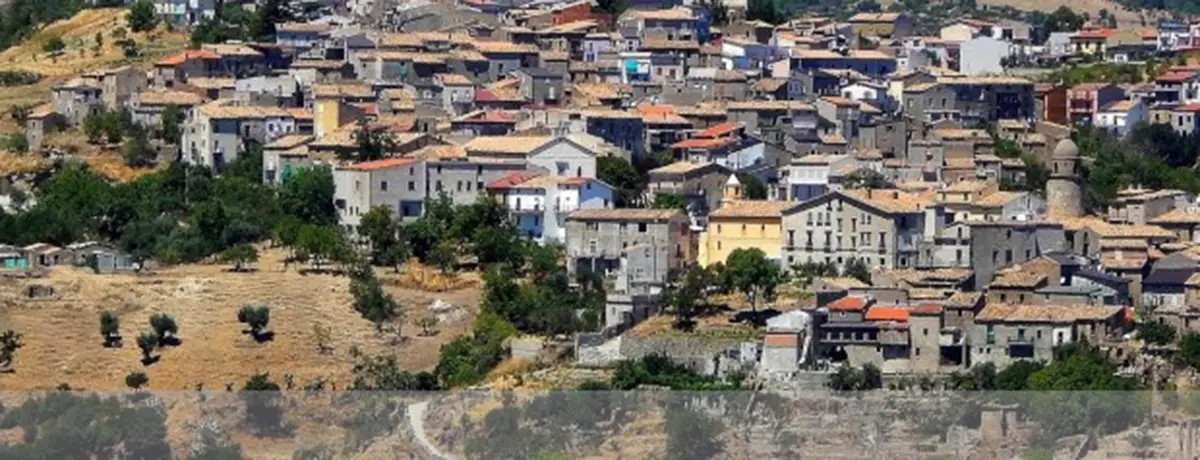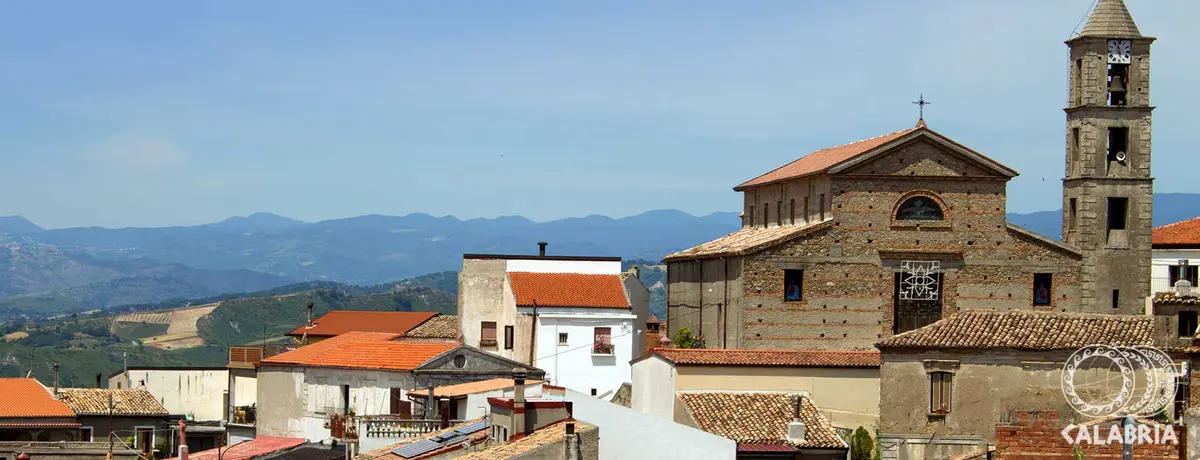Pallagorio
Pallagorio, the village of bread from the past

Town
Pallagorio lies in the pre-Silan hilly strip north of the marquisate of Crotone, on a plateau surrounded by the green of the Crotonese hills where vegetable gardens and vineyards are cultivated, and the air is pure and fresh.
Pallagorio has Arbëreshë origins and preserves the language, customs and traditions, but not the Byzantine-Greek ritual. The Pallagorio area winds along the watershed of two rivers which flow into the River Vitravo;
Among the streets of the old centre, there’s some interesting architecture consisting of historical houses and churches of great artistic value.
it has been inhabited since the Neolithic period, as evidenced by the many caves scattered around, in particular the so-called ‘Grotta di S. Maurizio’ (St Maurice’s Cave), of great palaeontological value. Significant archaeological finds (votive statues, amphoras, tombs and walls) dating to early in the 1st century and found throughout the region around the village, lead to the idea that this area was the site of the very old Chone, the Italic-Hellenic town founded by the Greek hero Philoctetes in the Mycenaean era. There are districts which still preserve the name of ‘Chona’, an area preserves the name ‘land of Cona’ and another toponymic of ‘Three fountains of Cona’, where significant archaeological finds from the Italic-Hellenic era (walls, amphoras, votive statues and tombs) have been made and the remains of an old necropolis with votive statues attributable to the cult of Orpheus. There’s an area which still preserves the old name of ‘Scea’ or ‘Porta Scea’, probably a gate into the old village, in the south-east of the residential area. Remains of walls and important finds giving evidence of Hellenic people from the most ancient times have been found here.
Pallagorio culture preserves the Arbëreshë language, an idiom which has added a rich Greek vocabulary to the Albanian base and a notable mix of Calabrian dialect. The craftsmanship of fine, hand-worked fabrics is widespread in Pallagorio, a true art passed down through the generations over the course of time.
Historic centre
Slipping among the streets of the old centre, there’s some interesting architecture consisting of historical houses and churches of great artistic value, such as the church of the Madonna del Carmine with its bell tower that soars proudly and seems the copy of the famous tower of the Florentine Palazzo Vecchio. The sacred building dates to the 16th century and has just one nave. The presbytery features a pointed arch; there are two altars to St Rita and St Anne on the side walls. According to tradition, the statue of the Madonna, kept on the main altar, reached the village on a wagon pulled by oxen without a yoke. When they reached the hill of the Carmine, the animals stopped, refusing to go further. The believers understood that the Madonna had chosen that place where the church was erected. The mother church of S. Giovanni Battista, of uncertain mediaeval date, in Romanesque style with three naves and a Byzantine apse, restored in the 18th century, the church of the 19th century S. Filomena, in neoclassical style with a neo-Byzantine cupola, and the church of S. Antonio, with original wall structures of uncertain mediaeval date, which was a small monastery for Basilian monks are all worth visiting.
Pallagorio bread
The typical cuisine of Pallagorio reflects that of the surrounding area and shares the food traditions with Crotone. A typical food in Pallagorio is the bread, made through the recovery of old grains and traditional processing methods, usually by women. It brings to mind the gestures and aromas of the bread prepared in olden times and releases a strong sentimental feeling; however, it’s of great cultural interest. Thus Pallagorio bread isn’t just a foodstuff but also evidence of the tradition which preserves and feeds the cult of the past through the reproduction of old practices that have never been forgotten.
Useful information
What to know about Pallagorio
Travel Ideas
There are 4 travel ideas.
Infopoint Pallagorio
Corso Vittorio Emanuele, 178, Pallagorio
No result









